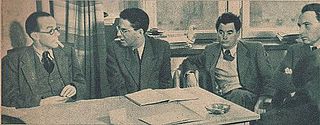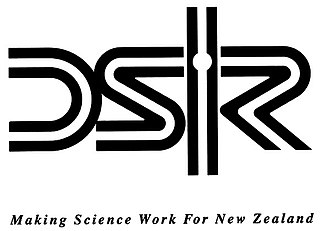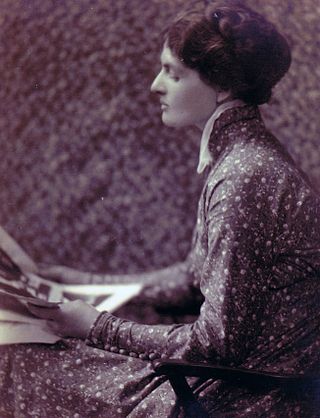
John Grierson was a pioneering Scottish documentary maker, often considered the father of British and Canadian documentary film. In 1926, Grierson coined the term "documentary" in a review of Robert J. Flaherty's Moana.
John Louis Beddington (1893–1959) was a United Kingdom advertising executive, best known for his work as publicity director for Shell in the 1930s and as head of the Ministry of Information Films Division during World War II.
Imperial Preference was a system of mutual tariff reduction enacted throughout the British Empire as well as the then British Commonwealth following the Ottawa Conference of 1932. As Commonwealth Preference, the proposal was later revived in regard to the members of the Commonwealth of Nations. Joseph Chamberlain, the powerful colonial secretary from 1895 until 1903, argued vigorously that Britain could compete with its growing industrial rivals and thus maintain Great Power status. The best way to do so would be to enhance internal trade inside the worldwide British Empire, with emphasis on the more developed areas — Australia, Canada, New Zealand, and South Africa — that had attracted large numbers of British settlers.

Nanette Newman is an English actress and author. She appeared in nine films directed by her husband Bryan Forbes, including Séance on a Wet Afternoon (1964), The Whisperers (1967), Deadfall (1968), The Stepford Wives (1975) and International Velvet (1978), for which she won the Evening Standard Film Award for Best Actress. She was also nominated for the BAFTA Award for Best Actress in a Leading Role for another Forbes-directed film, The Raging Moon (1971).

Night Mail is a 1936 British documentary film directed and produced by Harry Watt and Basil Wright, and produced by the General Post Office (GPO) Film Unit. The 24-minute film documents the nightly postal train operated by the London, Midland and Scottish Railway (LMS) from London to Scotland and the staff who operate it. Narrated by John Grierson and Stuart Legg, the film ends with a "verse commentary" written by W. H. Auden to a score composed by Benjamin Britten. The locomotive featured in the film is LMS Royal Scot Class 6115 Scots Guardsman.

Bury Park is an area of Luton, Bedfordshire, England. It is located 1 mile north west of the town centre on the A505 road to Dunstable. The area is roughly bounded by Claremont Road and Highfield Road to the north, Telford Way to the south, Hatters Way to the west, and the Midland Main Line to the east.
Arthur Melbourne Cooper was a British photographer and early filmmaker best known for his pioneering work in stop-motion animation. He produced over three hundred films between 1896 and 1915, of which an estimated 36 were all or in part animated. These include Dreams of Toyland (1908) and according to some sources Dolly’s Toys (1901), as well as Matches: An Appeal, which Dutch independent researcher Tjitte de Vries has claimed may have been the first animated film to be shown in public.

Basil Wright was a documentary filmmaker, film historian, film critic and teacher.

Sir Stephen George Tallents was a British civil servant and public relations expert.
Maurice Elvey was one of the most prolific film directors in British history. He directed nearly 200 films between 1913 and 1957. During the silent film era he directed as many as twenty films per year. He also produced more than fifty films – his own as well as films directed by others.

Jameson Thomas was an English film actor. He appeared in more than 80 films between 1923 and 1939.

The 1923 Imperial Conference met in London in the autumn of 1923, the first attended by the new Irish Free State. While named the Imperial Economic Conference, the principal activity concerned the rights of the Dominions in regards to determining their own foreign policy.

The Department of Scientific and Industrial Research (DSIR) was a government science agency in New Zealand, founded in 1926 and broken into Crown Research Institutes in 1992.
Beryl May Jessie Toye,, known professionally as Wendy Toye, was a British dancer, stage and film director and actress.
The Documentary Film Movement is the group of British filmmakers, led by John Grierson, who were influential in British film culture in the 1930s and 1940s.

Stuart Legg was a pioneering documentary filmmaker. At the 14th Academy Awards in 1941, Legg's National Film Board of Canada film Churchill's Island became the first-ever documentary to win an Oscar.

Ethel Léontine Gabain, later Ethel Copley, was a French-Scottish artist. Gabain was a renowned painter and lithographer and among the founding members of the Senefelder Club. While she was known for her oil portraits of actresses, Gabain was one of the few artists of her time able to live on the sale of her lithographs. She also did etchings, dry-points, as well as some posters.
Selfridge Provincial Stores was a holding company of a group of department stores in the United Kingdom. The company was formed by Selfridge & Co. in 1926 and was active until 1940.
Granton Trawler was one of the only films that John Grierson directed himself for the Empire Marketing Board/GPO Film Unit. The documentary style film was made in 1934, and was noted for its experimental use of sound without voice over.
Sir Edward Rae Davson, 1st Baronet, was a British businessman who was influential in colonial economics. He was the managing director of Messrs. S. Davson & Co., Ltd., a prominent West Indies merchant firm.



















